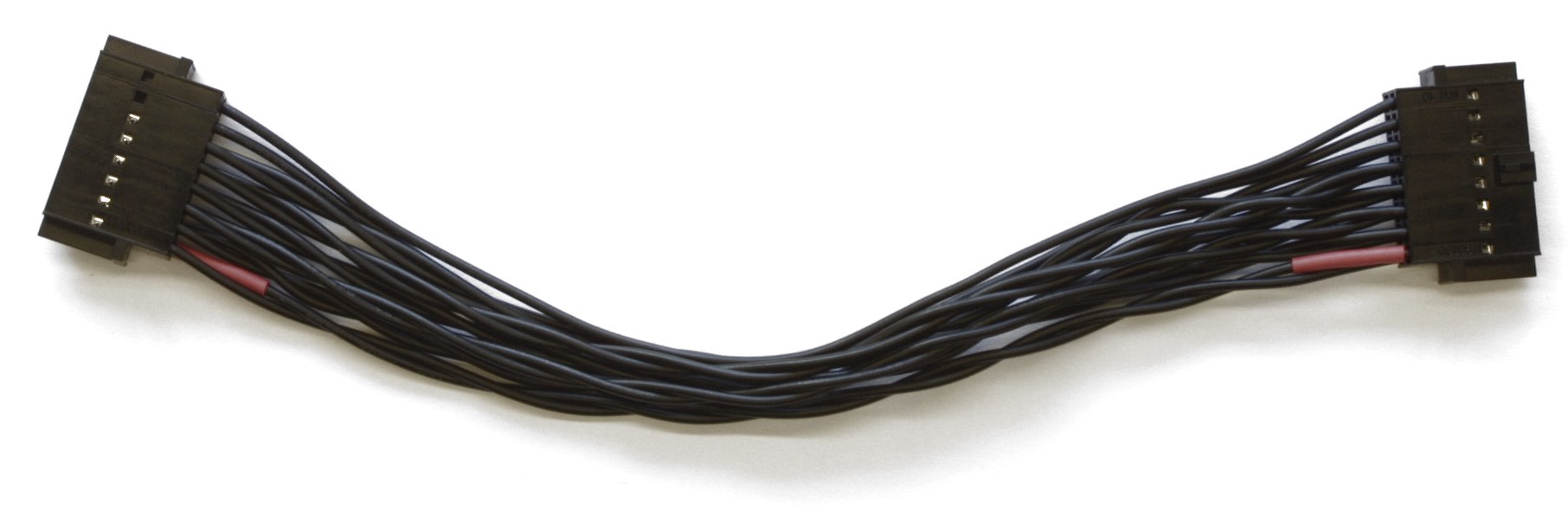Scaleable Power Supply advantage
The majority of noise and interconnection problems in eurorack instruments come from the power supply system. As an example of how much improvement can be gained from changing to an improved power supply and distribution, an existing case was upgraded to the scaleable power supply system carefully measuring the performance before and after.
As used the 4 row (12U) case had a pair of popular 4hp power modules connected in their recommended power daisy chain with a heavy cable, and distributed to the modules by bus boards. To eliminate any effects from the choice of brick they were powered from a laboratory power supply to reduce the noise and interference to only that of the distribution and power supply modules. After measuring the performance the power supply modules and bus boards were removed and 2 scaleable power supply boards were screwed in place, they were powered by an external brick and the same performance measures were repeated with all the modules and ribbon cables in the same places. Noise performance was measured with the outputs of the modules connected directly into a mixing desk preamp channel with the same pseudo balanced cable.
| Mixer | VCA | |||
|---|---|---|---|---|
| No input | Full Gain | No input | Full Gain | |
| Power Module + Bus Board | 98 | 65 | 86 | 82 |
| Scaleable Power System | >120 | 110 | >120 | 101 |
| Signal to Noise ratio (dB) | ||||
The increased dynamic range cannot be explained by reduction in power supply noise, distribution impedance, or 0V noise alone, they all contribute. The starting figures are generally usable for musical purposes, but the limited dynamic range requires careful gain structuring to produce a clean result. The particularly poor result from the mixer at full gain was from a wandering tone in the middle of the audio frequencies, adjusting other modules controls could change its pitch. Rearranging the modules or cabling could unpredictably shift the interference outside the audible range but it was only hiding and could return in the future with other changes. In contrast the scaleable power supply system reliably has no audible interference and the design addresses all sources of noise to extend the dynamic range. This frees the user to explore without having to be careful with the gain structure, and still maintain a studio quality dynamic range.
To compare improvements to CV accuracy the voltage difference between the jacks of modules was measured with the original power modules and again after upgrading to the scaleable power system.
| Busboards | Modules | Modules | |
|---|---|---|---|
| same busboard | entire case | ||
| Power Module + Bus Board | 8 | 10.2 | 24 |
| Scaleable Power System | <0.1 | 2.6 | 2.6 |
| + Crimped Power Cables | <0.1 | 0.9 | 0.9 |
| DC offset (mV) | |||
With a conventional power supply 0V connections are also carrying the power supply and the DC offset grows across the case. Changing to the scaleable power system reduced the offsets to less than 4 cents of tuning for a 1v per octave pitch CV signal, below the perceptible level for most people. The scaleable power system separates the power from the signals in the distribution so the only significant offsets are from the modules and their cables. To reduce these errors further the highest power modules were connected with power cables using individually crimped wires, 4 times heavier than a standard ribbon cable.

Isolating the power between each bus board, the scaleable power system does not degrade in performance in larger cases. Adding more bus boards to expand the scaleable power system does not impact the existing modules, and maintains the almost ideal 0V uniformity across all the boards. The local regulation on each board together with the power isolation prevents crosstalk or interference between bus boards. Even if daisy chaining power between multiple boards or different cases the scalable power system grows with reliable and stable performance. Rather than starting over with a new power supply and distribution for a new case or layout the scaleable power supply grows to meet any need, incrementally adding more capacity of predictable superior quality power.
